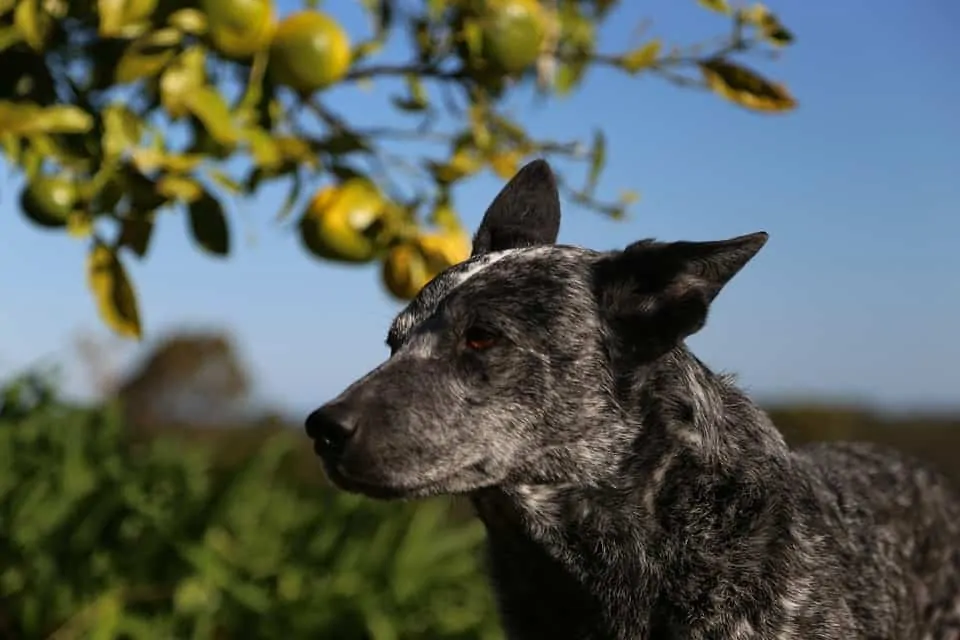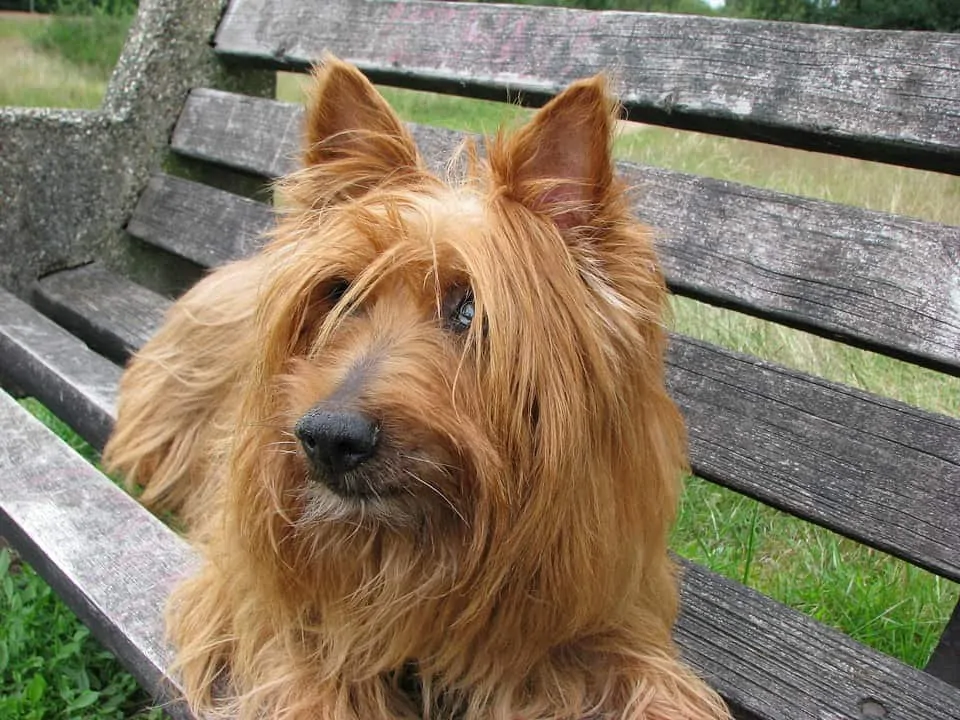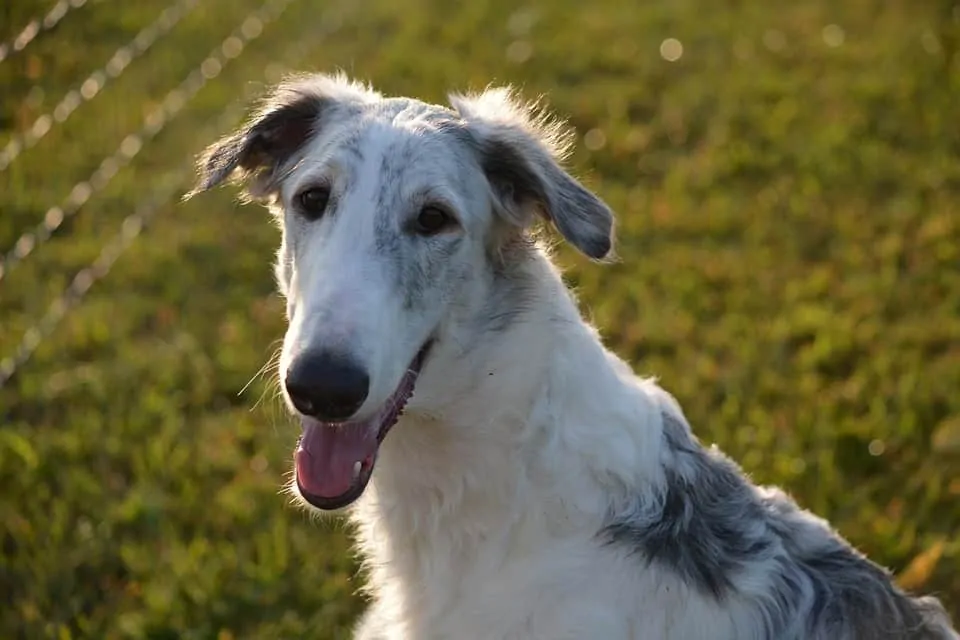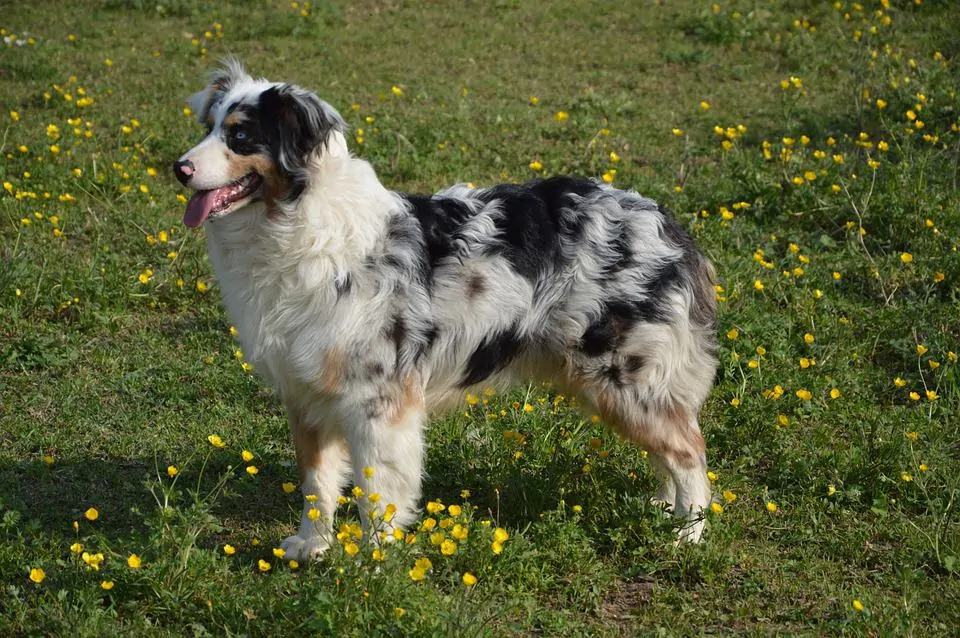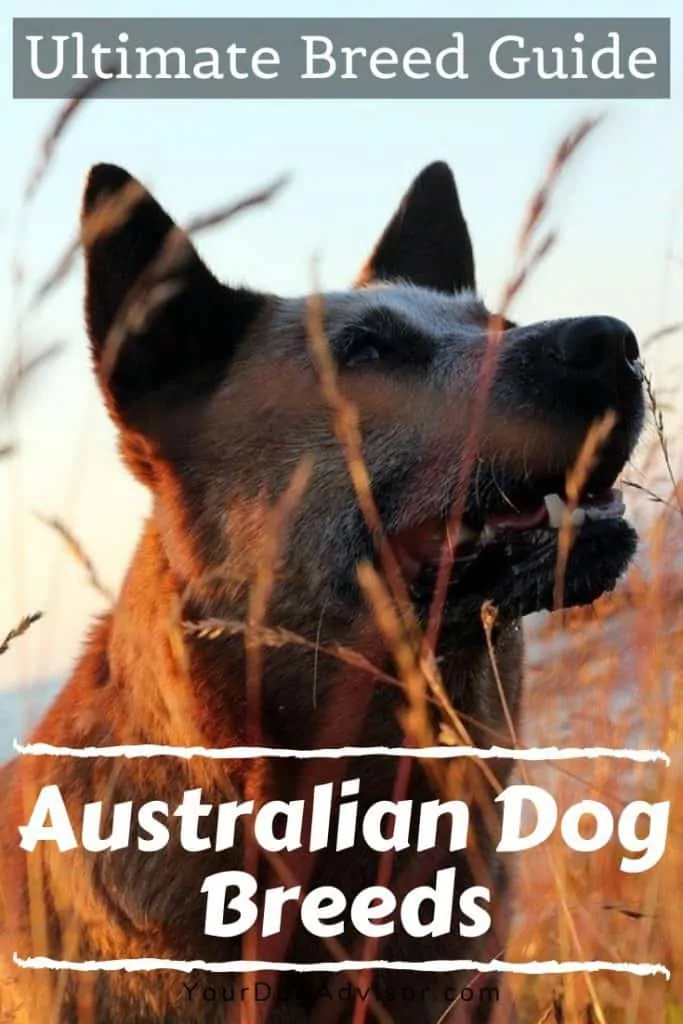With regard to climate, geography, and fauna, Australia may be the most unique country in the world. So it shouldn’t come as a surprise that this isolated nation has developed some awesomely noteworthy dog breeds.
From the well-known Cattle Dog to the lesser-known Koolie, these Australian pups were all bred specifically for life in this unusual environment.
Here are 11 dog breeds from down under that every dog lover should know.
Contents
Australian Cattle Dog
Australian Cattle Dogs are known for being hardy, but one dog named Bluey really stretched the term. He lived until the ripe old age of 29 years, 5 months. Now that is one old dog!
The Australian Cattle Dog, also known as the Heeler or the Queensland Heeler, has been driving cattle over the arid Outback for more than a century and a half.
This hardy breed was first bred by Thomas Hall, a rancher who was looking to create the perfect cattle herder. He imported cattle droving dogs from Northumberland and crossed them with domesticated dingos. The result was an athletic, hard-working dog capable of moving huge herds of cattle incredibly long distances.
Today’s Cattle Dog breed retains much of the same tenacity as they had centuries ago. They still have a hardwired herding instinct and are prone to nipping at anything that runs. They are loyal, often to one owner specifically, and always need a job to do.
The Australian Cattle Dog comes in two colors: red merle and blue merle. While the breed is often called Red Heeler or Blue Heeler depending on the coat of the individual dog, the two are actually the same breed. In fact, it is possible to get both colors in the same litter.
Australian Stumpy Tail Cattle Dog
While the most obvious difference between a Stumpy Tail Dog and an ACD is the lack of a tail (though some ACDs share the same feature), these Aussie dogs also tend to have thinner, more elongated heads.
Much lesser-known than the Australian Cattle Dog, the Stumpy Tail Cattle Dog actually shares much of the same DNA.
After Thomas Hall passed away, other ranchers in the region got ahold of his unique dogs. Without any standardized breed description, different lines began showing different characteristics. One line was especially easy to distinguish from the traditional Cattle Dog as these dogs carried the bobtail gene. Most of these dogs were born without tails or with very short tails.
Over time, the two groups became even more distinct with the Stumpy Tail Dog possessing more of an aloof, protective quality than the ACD.
Today, the Stumpy Tail Dog is not well known outside of the country. In the US, the two types of Heelers are considered a single breed, but elsewhere in the world, they are separated into two distinct breeds.
Like the ACD, these dogs come in both red merle and blue merle.
Australian Kelpie
The Kelpie combines different herding styles common to other breeds. They nip at the heels of livestock to get them running, but also use their hard stare to intimidate them to move off, similar to Border Collies.
The Kelpie is a driven shepherd that has been used to herd both sheep and cattle in the Australian outback.
While it has long been claimed that the Kelpie descends from the Dingo, genetic studies have revealed no such crosses exist in the breed’s history. More likely, this dog descends entirely from British drovers and collies brought to the country in the late 1800s.
These dogs were prized both for their working prowess and ability to drive and muster herds with little to no input from their owners. Like ACDs, these shepherds work by nipping at livestock. They have also been known to run across sheep in the pen to move around the animals more quickly.
As a pet, the Kelpie is independent, intelligent, and always looking for a job. They do very well in many dog sports and have even been used for tracking.
The Kelpie comes in many colors including solid black, chocolate, and red, and black and tan.
Tenterfield Terrier
As immigrants and traders moved from England to the south continent in the late 19th century, they brought with them small, smooth coated ratters. These dogs were responsible for protecting the food stash on the ships and for removing disease carrying pests.
Once in Australia, these mini ratters found a home first in the rural farmer’s homestead, and eventually in the urban cities. Their small stature, easy-care coat, and affectionate nature made them well suited for life as a companion just as much as a working breed.
For the first one hundred years of the breed’s existence, they were known as the Miniature Fox Terrier or just “Mini Foxies.” It wasn’t until the 1990s that breed groups looking to be recognized by the ANKC decided to separate the Tenterfields common to New South Whales from the Mini Foxies popular elsewhere in the country.
The Tenterfield dog of the modern era is an energetic breed with a need for stimulation, a strong hunting instinct, and a love for their family. They are still loyal companions and effective ratters.
The predominant color of the Tenterfield is white with markings of black, brown, and/or red.
Silky Terrier
These soft-coated Australian lap dogs are low-maintenance. They hardly shed, don’t require a ton of exercise, and are great for small spaces. It is easy to see why city dwellers in Sydney took to the breed so quickly.
Known in the US only as the “Silky Terrier,” many dog lovers are surprised to learn that this breed hails from the land down under. Everywhere else in the world, this breed is officially called the Australian Silky Terrier.
The Silky dog came into existence over one hundred years ago when the wired haired Aussie Terriers were crossed with the soft-coated Yorkshire Terriers. The result was a longer, more tenacious dog that still very much resembled the Yorkie.
Originally called the Sydney Silky, these dogs are unique among the country’s breeds as they were bred almost purely to be companions to city dwellers. Though, they are useful for catching snakes that find their way into the house.
After the Second World War, many American servicemen came home from Australia with these adorable dogs in tow. Their popularity skyrocketed quickly and these dogs are still valued companions to this day.
Like the two breeds that went into creating them, the Silky comes in one basic coloring, black/blue and tan.
Australian Terrier
The Australian Terrier was first bred in Tasmania, an island off the southern coast of Victoria. Their popularity has since spread to Europe and the US.
The small but feisty Australian Terrier descends from a number of British rough-coated terriers including the Cairn Terrier, Dandie Dinmont, and Irish Terrier. They were originally called Rough Coated Terriers with the name changing to highlight its country of origin almost one hundred years after it was first bred.
Like most small terrier breeds, this one was used primarily for ratting. They were effective in taking care of rodents on ships and in the home. Their large, erect ears and sensitive nose made them perfect for finding mice and rats in walls and around the farm. At the same time, their short powerful legs and elongated body allowed them to move into underground burrows easily.
Today’s Australian Terrier retains much of the characteristic tenacity of the original breed, but they are rarely responsible for keeping the house free of vermin. Instead, they prefer to spend their days running around with their owners in the yard, chasing balls, and going for long walks.
The standard coloring for this terrier is tan or red with a black or blue saddle.
Kangaroo Dog
The distinguishing characteristics of all sighthounds are their long necks and long legs. They are also some of the fastest dogs in the world, able to cover vast distances in mere seconds. The Kangaroo Dog needed these traits combined with the strength to tackle game known to disembowel humans with a single kick.
While not technically a breed so much as a hodge-podge of sighthounds crossed to make the perfect hunting hound, the Kangaroo Dog, or Staghound, is still an Aussie original by any standards.
This tall, lanky sighthound was first created in the early 1800s. Scottish Deerhounds and Greyhounds made up the base of the breed. Later, Wolfhounds and even Borzois were added to perfect the size and abilities of this utilitarian breed.
The breed was first used to hunt kangaroo. Their long necks and sensitive eyesight allowed them to spot herds of kangaroos from great distances. Their long legs and powerful bodies were perfect for chasing down and holding their prey while they awaited backup.
Today, Kangaroo Dogs are still largely used for their original purpose as a hunter’s companion. However, since hunting native fauna with canines is now illegal, the breed is used almost exclusively to hunt feral pigs and red fox that have been introduced to the continent.
Like their predecessors, this staghound comes in both rough and smooth coated varieties. The breed is most commonly black or bicolor, but can also be found in brindle.
Miniature Fox Terrier
Both the Mini Fox breed and the Toy Fox Terrier breed share similar characteristics but don’t share any direct blood. They were developed in parallel from the same stock, the toy in America and the mini in Australia.
Like the closely related Tenterfield Terrier, the first Mini Foxes came to Australia via ship. They were prized for their ratting abilities onboard and on the farm once they arrived.
But, while the Tenterfield was enjoying growing popularity in the cities of the south and west, the Mini Fox breed was being repurposed in the rural regions. Additional crosses were made with Whippets and other agile hunting breeds to turn this vermin hunter into a rabbit killer.
Over time, the Mini Fox became a skilled asset for ridding the farm of rabbits, rats, and snakes.
While not well known outside of the country, the breed is still highly prized within it today. They are still used on farms and to keep rabbit populations manageable. But they are also quite common as companion dogs. They make great family pets and do well with children. Like the Tenterfield, they are easy keepers with a small stature and fine, short coat.
These terriers come only in three colors: white and black, white and brown, or white and bicolor. Their ears can be fully erect or folded over.
Bull Arab
Like the Kangaroo Dog, the Bull Arab is not recognized as an official breed by any kennel club. However, their exclusive breeding and use in Australia still makes them a uniquely Aussie canine.
This dog was created by crossing a number of powerful hunting hounds. Bull Terriers and mastiffs were used to add size and strength, while Great Danes added height. Sighthounds like Greyhounds were used to add a strong hunting instinct and keen eyesight.
The breed is still used for their original purpose today: to hunt feral pigs. Their sensitive nose allows them to track their prey for miles. Once located, they will chase and pin the giant animals until their owners arrive.
While quite viscous and powerful in the Outback, well-socialized Bull Arabs make great companions. They are loyal, affectionate, and highly intelligent. Their size and strength does require a committed and responsible owner. Due to their hunting instinct, they can pose a threat to livestock and require confinement whenever they are not working.
The Bull Arab is most often white with red, black, brindle, or tan ticking and patches. However, since there is no breed standard, it is not uncommon to find these dogs in a variety of colors and patterns.
Koolie
The Koolie is a slender, tall dog compared to the better known and more compact Australian Cattle Dog. But both are robust, intelligent, and loyal workers.
Likely descended from the same breeding stock as the Cattle Dog but quite different in build and appearance, the Koolie has long been used by Australian ranchers for a variety of purposes.
With no strict breed standard, this dog has always been bred for the environment they inhabit. Some lines are short and sturdy in order to work with powerful cattle in dense ecosystems, while others are tall and sleek for gathering sheep in open areas.
In any case, the Koolie is an intelligent, hardworking breed. They are known for their quiet approach to the herd and are often used during lambing season to avoid panicking the laboring sheep.
The breed’s exact history is unknown. They descended from the same dogs that made the ACD breed, but may have had some additional collie influence later on. The breed name is thought to originate from the mispronunciation of “collie” by German settlers.
The Koolie is most often merle, but the lack of a physical breed standard means these shepherds can come in a variety of colors from solid red to black and tan bicolor.
Dingo
Like the pariah dogs of India and the Carolina dogs of America, the Australian Dingo has taken on a familiar form. They have the same light red coat, erect ears, and a semi-curly tail of most wild dog subspecies.
While not technically a “domestic” dog breed, you can’t talk about canines and the land down under without mentioning the Dingo.
These wild dogs first came to Australia over 6,000 years ago. Genetic research into the canine kingdom has revealed that Dingos are closely related to New Guinea Singing Dogs. The two groups of feral canines diverged on two occasions, leading researchers to believe that two separate migrations to Australia occurred.
Early European settlers recorded accounts of Dingos living both in the wild and alongside Aboriginals. Like the New Guinea Singing Dog, these canines have a history of both domestication and pure wildness. However, there is no evidence that artificial selection has ever influenced the genes of this subspecies.
Today, Dingos still thrive in the Outback and across much of the continent. Because of their impact on livestock, their numbers have been intentionally reduced on a number of occasions, but they always appear to bounce back rapidly.
Dingos are most often yellow, tan, or red, but black and tan varieties are not unheard of. Many Dingos also have white markings.
What About the Australian Shepherd?
The Australian Shepherd may not be a true Australian breed, but their superb herding abilities and beautiful coats mean they can more than compete with the shepherds from the land down under.
Does it feel like we have forgotten one very popular breed of Australian dog?
Contrary to what their name suggests, the Australian Shepherd was first bred and raised in the United States. The breed hails from English collies that came over with immigrants in the 20th century.
Why they were referred to as “Australian” shepherds is not well understood. There appears to be no ties between the breed and the south continent.
While the Aussie may not hail from the land of the Aussies, the eleven breeds above provide plenty of their own Australian magic to the canine kingdom.

Jen Jones is a professional dog trainer and behavior specialist with more than 25 years of experience. As the founder of ‘Your Dog Advisor’ and the ‘Canine Connection’ rehabilitation center, she applies a holistic, empathetic approach, aiming to address root causes rather than merely treating symptoms.
Well known for her intuitive and compassionate approach, Jen adopts scientifically-proven, reward-based methods, encouraging positive reinforcement over punishment. Jen specializes in obedience training, behavior modification, and puppy socialization. Her innovative methods, particularly in addressing anxiety and aggression issues, have been widely recognized. Jen has worked with many of the world’s leading dog behaviorists and in her free time volunteers with local animal shelters and rescue groups.

